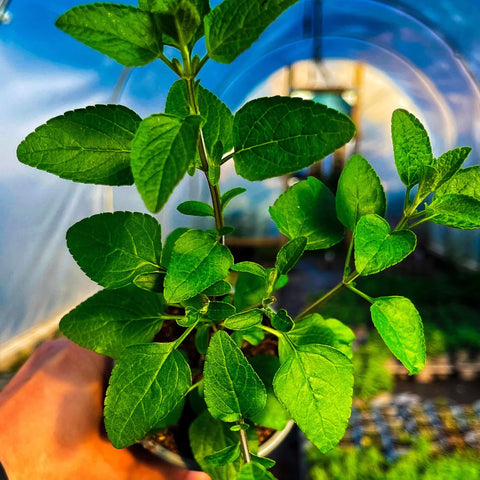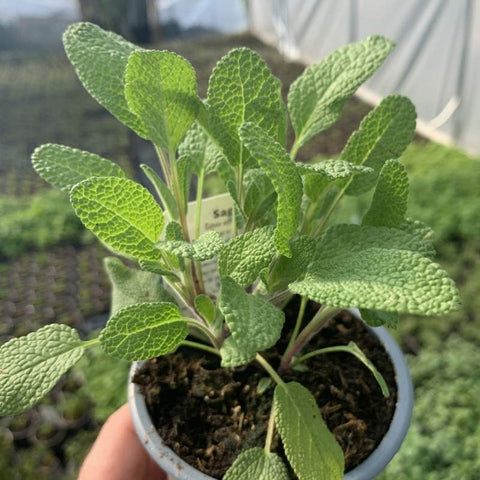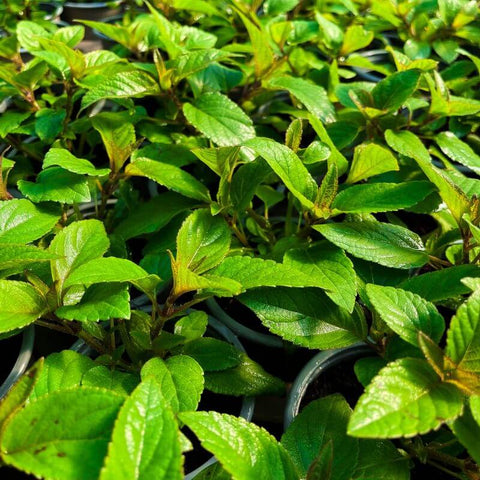How to grow sage
Sage, oh wonderful sage. This classic kitchen garden herb is such a wonderful, fragrant and beautiful plant that we just love so much. Otherwise known as Salvia, this drought-tolerant shrubby plant is one of the easiest to get started with and will bring you joy for many, many years to come, as long as you give it a little TLC here and there. Whilst many of you will have heard of the classics such as purple sage and golden sage, one of the true delights for us is blackcurrant sage, a game changer of a herb which is simply delicious with a sweet hit of fruity goodness and gorgeous purple flowers during the summer. You NEED to meet this herb, we promise you won't be disappointed.

Where is best to plant sage in the garden
In the UK, you'll want to plant your sage in a well-drained, sunny location for optimal growth. This aromatic herb thrives in soil with good drainage, preferably sandy or loamy, to prevent waterlogged roots. Choose a spot that receives maximum sunlight each day if you can as this will enhance both flavour and essential oil production. However, it will tolerate part and often full shade so don't fret if you're growing space isn't a complete suntrap. Sage is a super versatile plant which complements a variety of garden layouts, from herb beds to borders and pots. It looks fantastic as part of a herb spiral and when planted amongst the other classics of the kitchen herb garden family such as oregano and thyme.

How to grow sage
Whilst you can sow sage from seed, it's a time consuming process starting off in early spring and sometimes taking a number of weeks to germinate. That's why its most common for sage plants to be grown on from pots, like the ones we sell in our online herb shop, or from cuttings! To propagate from cuttings, take 8-12cm stem cuttings in spring or early summer, remove lower leaves, and place them in water or damp compost. Keep them in a warm, bright spot until roots develop, then transplant into larger pots before hardening them off to go outside into the garden. Our potted plants can simply go straight into the ground, or into pots as we send them out at optimal times of the year to ensure you get the best out of these beautiful stems.

How to prune sage
You can start pruning your plants in the early spring, removing woody stems and any dead or damaged growth. Trim the plant to maintain a compact shape, cutting just above a set of leaves and you'll be rewarded with a full, bushy plant later in the year. Be careful and avoid cutting into the woody core excessively, as sage may struggle to rejuvenate from old wood and may leave you with an architectural, but sad looking plant. Regular harvesting during the growing season will also help you to keep your herbs looking their best, and encourage new growth too.
How to care for sage in the winter
As temperatures drop, we'd definitely recommend adding a protective layer of mulch around the base to insulate the roots against frost, like a lovely natural blanket. Consider covering the plant with horticultural fleece during severe cold spells, shielding it from freezing winds if you're in a particularly cold area. It's also worth keeping an eye on water levels and ensuring the plant is watered but not sat in damp, boggy grounds for a long period of time as this could lead to your sage taking a trip to plant graveyard. With these precautions, your herbs will stand a good chance of making it through the winter months, ready to flourish again in the spring.
Want to learn more? Check out our in-depth YouTube video on how to grow pineapple sage:
Which varieties of sage should I add to my garden?
If you can exercise enough self-restraint not to order every variety we sell, then we applaud you, and here are out top picks:
Blackcurrant sage - no, really, you NEED it
Pineapple sage - the foliage on this one is a real showstopper
Purple sage - a classic which enhances so many dishes throughout the seasons
If you really want to get your geek on your herbs this year, why not join our Herb Club?





